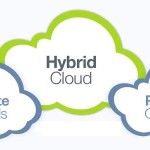Within reach of most IT budgets, storage area networks pay off! SAN is a more-efficient use of data storage that has become affordable for all but the smallest of IT shops. SAN devices are disk rays located on a network storage device shared with multiple servers—up to 16 servers.
Here are the top 5 features that are considered a “MUST HAVE” for SAN:
- Dynamic LUN Provisioning
Adding disk capacity dynamically to a server is an advanced feature that you should require as a “first cut” in the solution selection process. Dynamic LUN provisioning allows storage administrators to present extra storage to server systems on a moment’s notice. And, here, the term “moment’s notice” almost always means after the lengthy and arduous request process, including all of the necessary dotted “i’s” and crossed “t’s.” The SAN administrator can present the requested additional disk space, and the server system administrator can immediately extend the server’s disk to accept the newly presented space.
- Dynamic Snapshots
Dynamic snapshot provisioning is another advanced feature SAN administrators love. It allows administrators to back up data from one storage tier to another without leaving the SAN. This feature creates very fast and very reliable backups. SAN snapshots allow quick point-in-time backups of critical data for databases.
For databases, these snapshots provide a rollback point for data. The snapshot, plus transaction logs since the previous snapshot backup, create a rapid restore point for database administrators.
- WAN Replication
WAN replication is a very advanced disaster recovery (DR) feature. If your business and data are mission-critical, this must-have feature should be in the “first cut” category with dynamic LUN provisioning. Some of the accompanying features with this technology are encrypted data transfer, deduplication and the ability to set automated replication options.
Generally thought of in terms of cloud-based disaster recovery, WAN replication can be used to replicate from data center to data center for your own DR solution. The cloud, however, is a good option for creating an across-the-wire DR solution.
- SAN-to-Disk Backup
Backing up from SAN to disk is different than the dynamic snapshot concept. SAN-to-Disk (S2D) is an advanced feature that enables an administrator to create impromptu backups onto USB or eSATA disks. This feature is not intended for regular snapshots or backups. It is meant to be used only in unusual cases or as an emergency backup.
The reason that you don’t want to use this feature as a regular solution has to do with speed and reliability. USB and eSATA disks are not fast in comparison to RAIDed arrays; nor are they reliable. The occasional snapshot is harmless and a nice feature for your SAN system to accomodate, but don’t rely on it long term or with regularity.
- Multiple RAID configurations
Your SAN must have multiple RAID configurations available along with the ability to mix them within the same environment. Different workloads require different levels of redundancy. Therefore, your SAN needs flexibility to accomodate any type of workload.
It’s unwise to purchase multiple types of SAN technologies or levels to accomodate those different needs. Higher-end SAN solutions can provide that one-size-fits-all scenario with ease. Database systems, file servers, application servers and web servers all have different RAID requirements, but there’s no need to purchase three or four different technologies to handle them and their backups
[php snippet = 8]





